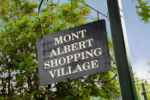Background
The main access to this large park is in Riversdale Rd, Surrey Hills, just to the south of Mont Albert.
It was first created when the Hawthorn Tramways Trust (HTT) purchased 137 acres (55
hectares) of land from Mrs Eliza Welch, under the condition it was to be used as a public park. The park opened on 31 March
1917 when Sir Arthur Stanley planted a Golden Wattle and named the park.]
Due to the HTT's financial troubles, further development of the park was put off for some time. After the
HTT had been amalgamated into the Melbourne and Metropolitan Tramways Board,it was deferred due
to work on electrifying Melbourne's cable tramways.
Planning and development of the park started in the 1920s and 30s, with a plantation of 12,000 wattle trees
planted in between 1926 and 1928. A 9-hole golf cpurse opened at Wattle Park in October 1937, with other
facilities following later.
With the rise of popularity of motor cars in the 1960s and 70s, the MMTB (which was absorbed by the new
Metropolitan Transit Authority in 1983) was focusing its attention elsewhere. Subsequently, local residents
began to complain to the state government about the poor state of Wattle Park. In 1991, ownership of Wattle Park was passed
from the Public Transport Corporation to the Melbopurne snd Metropolitan Board of Works which undertook
a program to rehabilitate the park's landscape.
The park has several interesting heritage features, including the "Lone Pine", two of Melbourne's older
trams (used as shelters!), the Chalet, and a picnic area. A network of hiking trails may be explored, some of which pass through
original bushland, and over two creeks.

